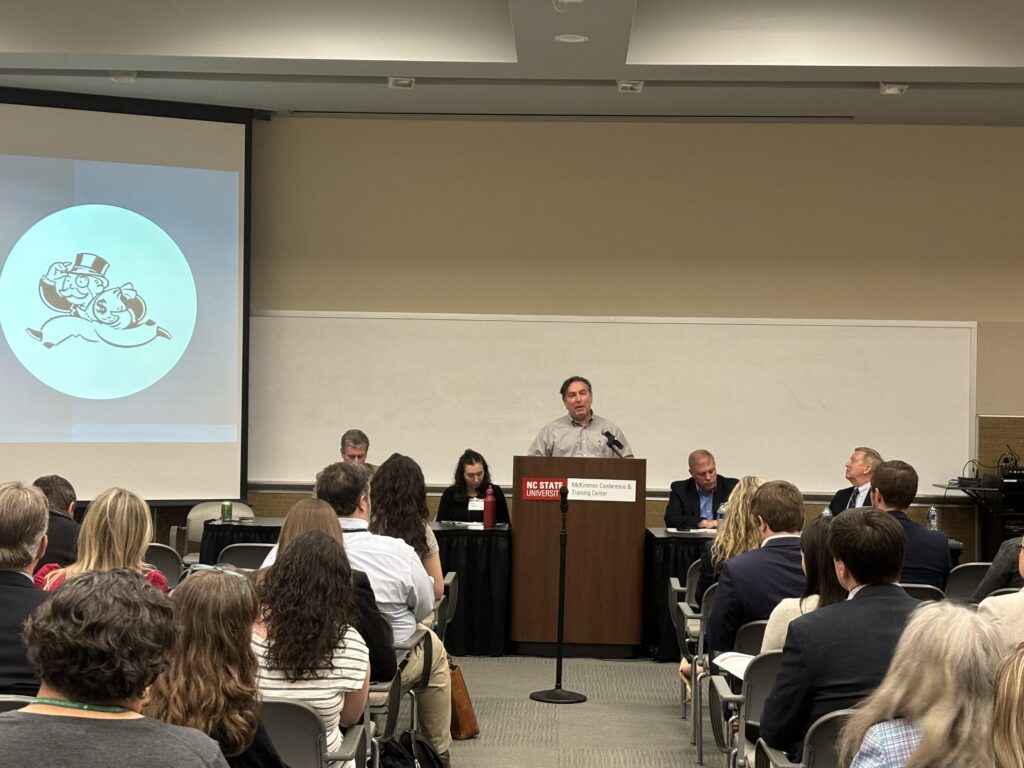
CCEBA Executive Director Chris Carmody spoke April 23rd at the NC Clean Energy Technology Center State Energy Conference on the Market Structures for the Energy Transition panel along with Kevin Martin of the Carolina Utility Customers Association, Inc., Nelson Peeler of Duke Energy Corporation, and Tim Ponseti of SERC. NARUC’s Sarah Fitzpatrick moderated the session. Chris discussed how different market models create different economic incentives for utilities to invest in generation, transmission, or both.
Southeastern Monopoly Model
The Southeastern government monopoly model inflates costs for consumers and lacks transparency. Utilities under this construct make more money the more they spend on capital investments, leading to expensive stranded or overbuilt assets. Chris gave the example of the abandoned VC Summer nuclear facility, which cost South Carolina ratepayers $9 billion without ever generating electricity, and the $17 billion in cost overruns at the Vogtle nuclear plant in Georgia (which was also seven years behind schedule).
Southeast Energy Exchange Market
The Southeast Energy Exchange Market (SEEM) is a bilateral trading platform that resembles an oligopoly: utilities are the only members. SEEM has artificial barriers for participation by independent power producers and large buyers; if these groups could participate, ratepayers would benefit. A Federal court found SEEM to be illegal last year due to anticompetitive practices and FERC is reconsidering SEEM’s status. Chris pointed out that if SEEM allowed independent power producers, merchant operators, and buyers, it could comply with the law, drive down energy costs, and would resemble an Energy Imbalance Market.
Energy Imbalance Markets and Regional Transmission Organizations
Chris compared Energy Imbalance Markets (EIMs) and Regional Transmission Organizations (RTOs) to ‘dating versus getting married,’ saying that EIMs are voluntary and reasonably easy to withdraw from, whereas RTOs carry a substantial financial penalty if members choose to leave. The South Carolina Senate is discussing the creation of an Energy Imbalance Market in the current legislative session.
The panel concluded with a discussion of whether the Carolinas need more generation, more transmission, or both. Chris argued for both, noting that a more robust transmission system is critical for reliability and sharing distributed and regional energy sources. Finally, Chris talked about the lack of transparency in generation assets as multiple utilities – Dominion Energy, Tennessee Valley Authority, Southern Company, Duke Energy – all court the same large manufacturers in different states. Put another way, the public has no way of knowing whether generation sources are redundant because manufacturers and other large energy consumers spend considerable time deciding where to build and locate.

Recent Comments